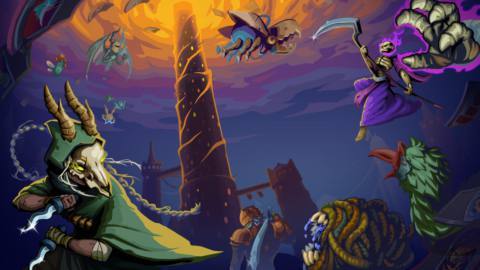
Who saw this coming? As a self-contained spin-off to the Borderlands series, Tiny Tina’s Wonderlands takes one of the more charming characters from its universe and invites us on a dungeons and dragons-style detour. The idea is undeniably cute. Think of Borderlands’ FPS mechanics as seen through the lens of a table-top Dungeons and Dragons campaign, and you’re on the righty track. But at its core, we’re still looking at an extension of the same Unreal Engine technology that’s at the foundation of Borderlands 3.
In terms of its tech, Tiny Tina’s Wonderlands has a few extra twists. Unlike the open-world roaming in mainline Borderlands, here we navigate between key areas using a table-top style world map. It’s oddly akin to an old-school JRPG world maps as you guide a super-deformed version of your character between missions. A few tricks in the Unreal engine suite help sell the idea, too: a heavy depth of field creates a lovely tilt shift photography effect – another reminder that you’re a tiny figurine on a table-top. You’ll see bottle caps and pins dotted around, and all round it’s a pleasant departure from the typical open-world Borderlands approach. No need for vehicles here, either. As a result, missions are also more focused in design. More linear, too; once you enter an area, you have some lateral movement within a map to explore – but these are often more contained experiences, like themed fairground rides.
PS5 and Series X offer two graphics modes: a 4K, 60 frames per second resolution mode (with a dynamic 1800p to 2160p window) alongside a lower resolution performance mode – which unlocks 120fps support on these consoles with the appropriate display attached. Series S has just the one mode targeting 60fps, scaling all the way from 960p to 1440p – meaning a significant reduction in clarity. Graphics features are evenly matched between the higher end machines, though for Series S, grass density and shadow quality are pared back by comparison. On the face of it, there’s the sense that Series S is overly cut back once again, but viewed in isolation, the experience still pays off – and performance trumps higher-end settings in a title like this one.






